My school cafeteria served the predecessor to sad desk lunch.
Kids would take the rubbery cheese out of the stuff crust pizza and see if they could bounce it; "turkey and gravy on a biscuit" contained "real meat"; and the salad bar’s lettuce was limp enough to make a gas station salad seem appealing.
The only time school lunch was worth buying? French toast stick day.
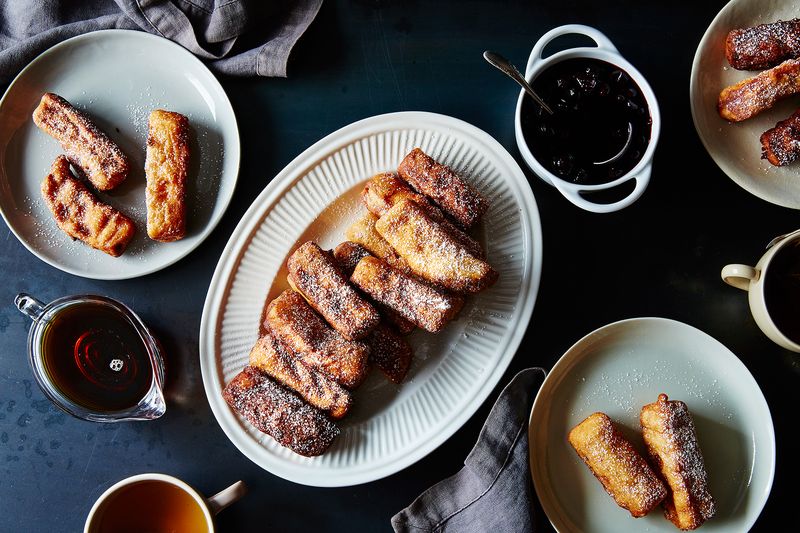
Before entering elementary school, I’d never had French toast sticks. (I probably had French toast, though—my parents aren’t cruel enough to withhold all the great breakfast things.) Sure, you can eat French toast in slice form, but sticks are far superior. There’s just something so visceral about these vanilla-y, egg-coated soldiers. Maybe it’s the way you can dunk them in a tiny saucer of syrup, or the imminent danger of sticky fingers, or the choice to either eating them with a fork and knife or with your hands. Try picking up a slice of regular ol’ French toast. See? Not nearly as enjoyable of an experience.
While I’m not entirely sure of how my school cafeteria made their French toast sticks, or rather how whatever industrial food supplier they bought their meals from did, I can promise the method described below does not come close—and I mean this in the best way possible.
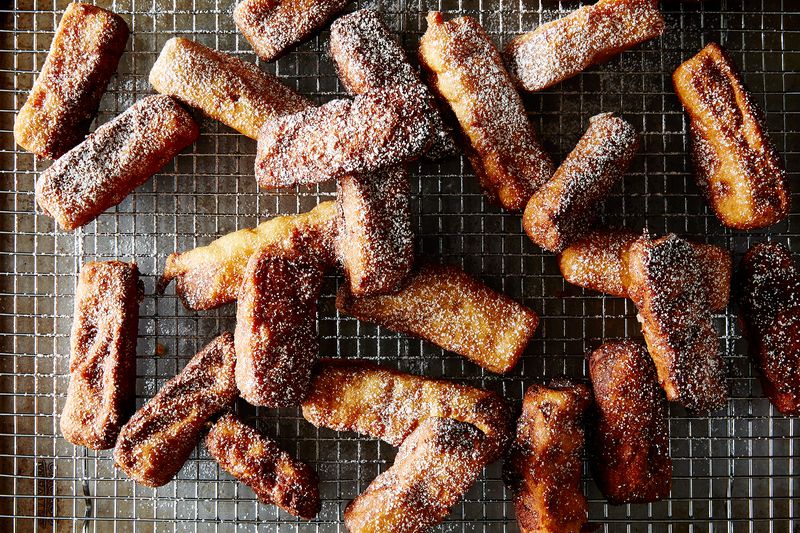
Firstly, we’re working with leftover brioche or challah. You can use other types of bread, but the result will not be nearly as rich and will therefore be sad. Sad French toast sticks aren’t allowed.
Secondly, we’re not just taking a French toast batter and applying it to sticks. No, this batter’s spiced with cinnamon, nutmeg, ginger, and cloves and acts as a coating.
Which, brings us to point three: French toast sticks are meant to be deep-fried. They get crunchy and caramelized on the outside thanks to the flour and sugar, yet remain soft and pillowy on the inside in the best French toast way.
Confectioners' sugar and maple syrup are a must for serving. No one will be mad if there’s some sliced fruit or perhaps an apple compote alongside either. Eating these for lunch is, of course, a great idea—no school cafeteria required.
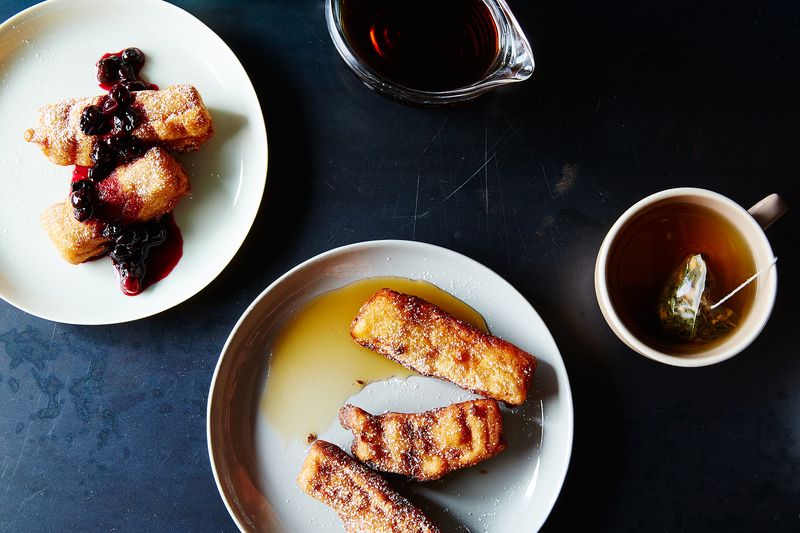
French Toast Sticks
For the toast:
Eight 3/4 inch-thick slices brioche or challah, preferably day-old
For the batter:
2 cups all-purpose flour
1 1/2 cups sugar
1 1/2 teaspoons baking powder
3/4 teaspoon ground cinnamon
1/4 teaspoon freshly grated nutmeg
1/2 teaspoon ground ginger
A large pinch ground cloves
2 cups buttermilk
2 large eggs
1 teaspoon vanilla extract
Vegetable or canola oil, for deep-frying
Confectioners’ sugar, for dusting
Maple syrup, for serving
Fresh fruit, fruit compote, stewed fruit, etc., for serving
Cut each slice of bread into thirds to make sticks. (Don't worry about making each piece perfectly straight and rectangular.)
For the batter, mix all the dry ingredients (flour through cloves) in a large bowl. In another bowl, whisk together the buttermilk, eggs, and vanilla extract. Pour the wet into the dry ingredients and fold, using a spatula, until just combined. The batter might be a little lumpy and that’s perfectly fine, just make sure not to overmix.
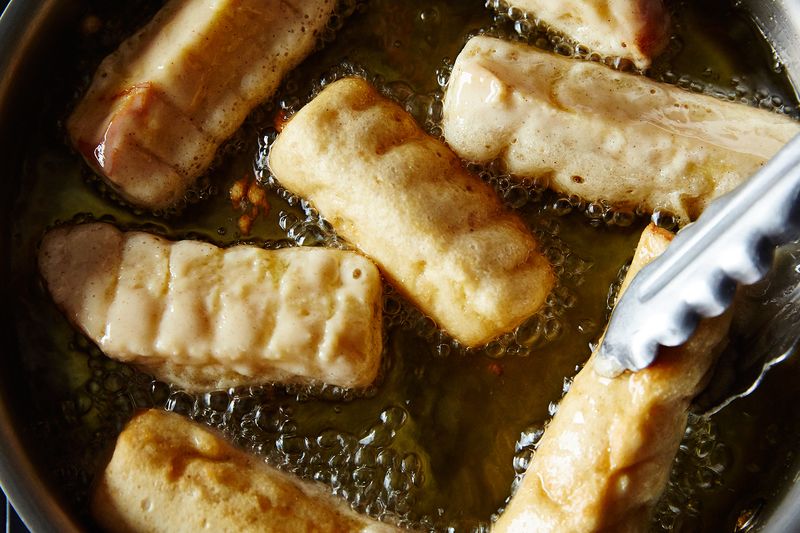
In batches, immerse a few of the sticks into the batter and let sit for 3 minutes. Transfer the bread sticks to a wire rack set over a baking sheet to drain while the oil heats.
In a large, deep skillet, heat about 1 1/2 inches vegetable oil over high heat until it reads 350° F on a deep-fat thermometer. Working with a few at a time, fry the bread sticks for 3 minutes, flip, and fry on the second side until golden brown. Drain on paper towels.
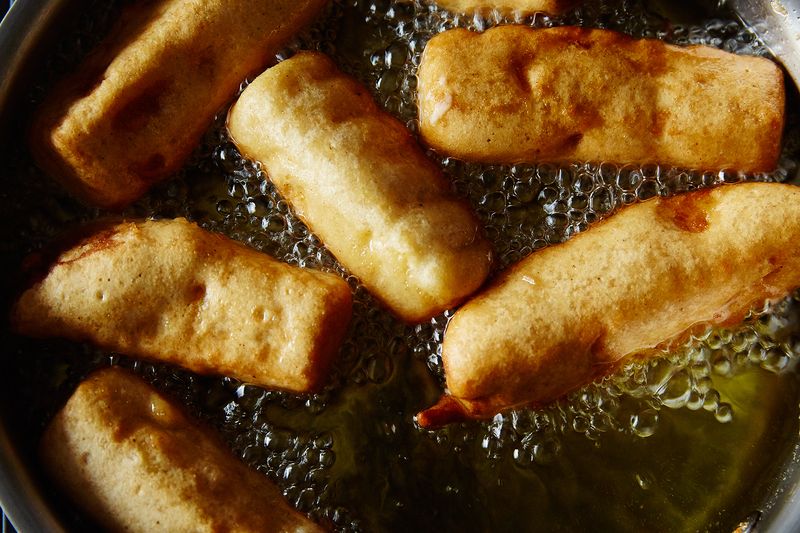
Dust with confectioners’ sugar, drizzle with maple syrup (or serve some in a cup alongside for dunking), and serve with fruit or any of its iterations, if you like. Serve immediately.
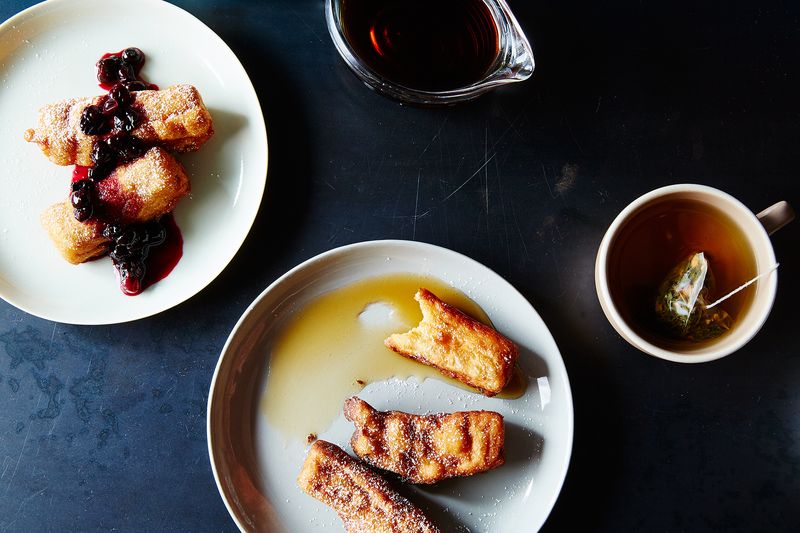
See the full recipe (and save and print it) here.
Photos by James Ransom







See what other Food52 readers are saying.